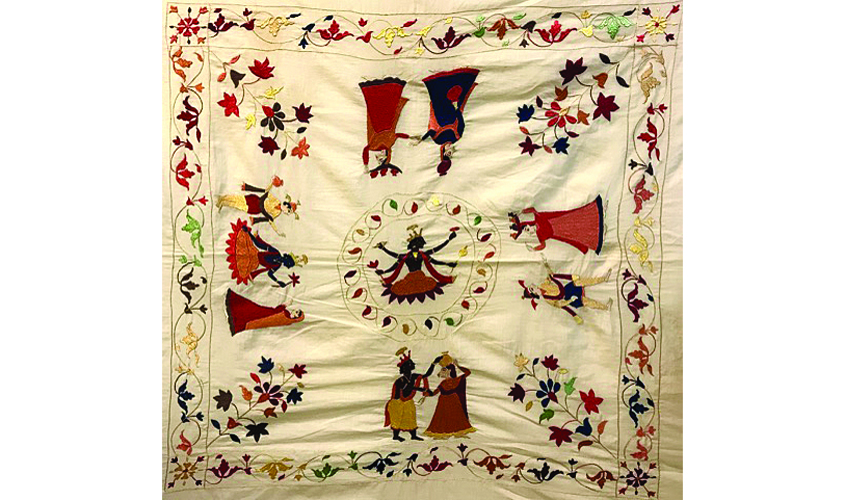An art exhibition dedicated to this unique art form is to be inaugurated at the Visual Art Gallery at Indian Habitat Centre. “Chamba Rumal, Life to a Dying Art’” traces Delhi Crafts Council’s journey in reviving and nurturing this craft from 1992-2017.
The Chamba Rumals are embroidered square cloths from Chamba in the state of Himachal Pradesh. They are used for covering platters, as gifts for auspicious occasions and for offerings to a deity. During weddings, rumals are exchanged between the families of the bride and groom as a token of goodwill.
Pahari miniature artists, usually men, drew the outlines on fine handspun and hand woven unbleached muslin. Traditionally, women of the upper classes then embroidered upon these compositions using untwisted coloured silk floss. The double satin stitch technique used is known as do-rukha and ensures exact duplication of the image on the reverse. The elaborate floral borders, ornamentation and portrayal of figures and animals reflect the sophistication of miniature paintings. The common themes are the legends of Lord Krishna.
The exhibition will be showcasing a range of these handcrafted “rumals” along with honouring artisans and craft persons who have endeavored to keep this unique art form alive. The Council is also offering guided tours of the exhibition of Wednesday and Saturday to help discerning art lovers get an in-depth understanding of this unique art form.
Often called “Paintings in Embroidery,” the Chamba Rumal was losing its relevance and the skills required for it were fast disappearing when the Delhi Crafts Council took up the challenge of conserving and reviving this art.
The elaborate floral borders, ornamentation and portrayal of figures and animals reflect the sophistication of miniature paintings. The common themes are the legends of Lord Krishna.
“It would have been a pity if this beautiful art form was left to die. In the absence of any institutional support or avenues to help them market their art form, many artisans had given up this tradition. However, we decided to renew this tradition and revive it by initiating a series of measures, including training and skilling of artisans in this traditional art form, and efforts to popularise them. The Council has also been successful in re-introducing naturally dyed silk floss for the embroidery. The Delhi Crafts Council is happy to have contributed to the revival of this marvelous tradition,” says a representative of the Delhi Crafts Council.
A detailed study of old rumals in the collections of various museums across the country and abroad was undertaken. A core collection of selected rumals was then re-created by the artisans from Chamba and exhibited at various cities across India. The next step was the formation of “Charu”, a centre in Chamba. Here, with the help of regular interactive workshops, the artisans are trained to improve their skills and experiment with new materials and designs.
The exhibition will be held at India Habitat Centre from 3-8 April

